You may be familiar with the America’s Test Kitchen brand — from the eponymous “America’s Test Kitchen” television show, watched by millions of viewers, to the magazines, books, and kitchen tools, the name has been synonymous with home cooking for two decades.
Many cooking shows you see on daytime television have a specially created set made for broadcast, which may not be as useful as your home kitchen. However, at “America’s Test Kitchen,” everything you see is real. A working kitchen is integral to the development of the “best” recipes, with America’s Test Kitchen’s stated mission “to perform thousands of tests every year, investigating the fundamental principles of cooking to provide our audience with the techniques, tools, and ingredients needed to succeed in the kitchen.” A dedicated team of over four dozen chefs works diligently to perfect recipes for audience members to try at home. The “America’s Test Kitchen” team not only demonstrates their hard work on screen, but also via magazines, books, and social media.
“America’s Test Kitchen” is so transparent about what’s happening in front of the camera, having been on the air for 24 seasons since 2001, you might be surprised to learn that there are secrets behind the scenes. Read on for some surprising facts that this beloved institution keeps hidden.
Read more: The Biggest Scandals To Ever Hit The Food Network
America’s Test Kitchen Was Launched From Cook’s Illustrated
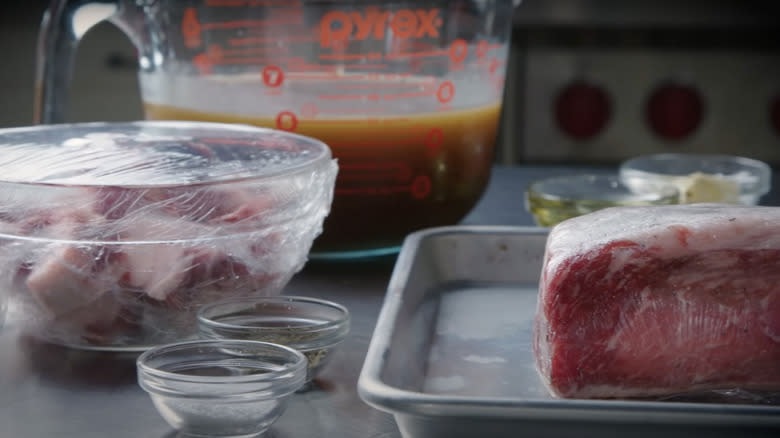

“America’s Test Kitchen” wasn’t pitched as a successful television show out of nowhere. Before the popular series launched in 2001, almost ten years earlier, a 32-page magazine debuted called Cook’s Illustrated. The magazine, started by Christopher Kimball, has never accepted advertisements, and has been both loved and loathed by home cooks for years, as the descriptions of the recipes are lengthy and include the science behind the cooking as well as stories of testing and how the chefs arrived at the published “best” version.
But after 30 years of publishing without advertisers, Cook’s Illustrated is still going strong, putting out issues every other month. Peter Doucette, a managing director in the Telecom, Media & Technology practice at FTI Consulting, told Digiday “America’s Test Kitchen made a strategic decision … that was atypical at the time but prescient because they built a stable business, not one that is dependent on episodic ad revenue.”
Along with Cook’s Country, another magazine in the America’s Test Kitchen portfolio, the two publications boast one million subscribers, even after Christopher Kimball’s departure. Kimball left his position as editor-in-chief of Cook’s in 2015 when he left the entire America’s Test Kitchen enterprise — but more on that to come.
Founder And Host Christopher Kimball Never Worked In A Kitchen


Most fans of America’s Test Kitchen associate the brand with its founder, Christopher Kimball, as he served as the on air host from 2001-2016. But it might surprise you to learn that this popular cook was not a professional chef and never worked in a kitchen before founding Cook’s Illustrated and America’s Test Kitchen.
In some ways, this helped to develop his approach to teaching: “Show, don’t tell,” as he explained to Mostly Food & Cocktails. “I’ve always been interested in cooking … I spent summers and weekends in Vermont, and in the town there was a baker, Marie: she sold bread and cookies and pies. I spent a lot of time at her house. She had the ‘Vermont’ technique of teaching — never tell people what to do, just show them what to do.” He continued, “If I was doing something wrong, I’d suddenly notice her next to me doing it the right way, without saying anything.”
This early experience cemented Kimball’s interest in food, but he pursued other interests and careers for a time. He first studied primitive art at Columbia University, then received his Ph.D. in Oceanic art at Cornell. After spending so much time in the art world, Kimball returned to his love of food, taking cooking classes and then launching Cook’s Magazine, the precursor to Cook’s Illustrated, in 1980. As he said in a Hungry Onion online Q&A, “Cooking, one might say, is a primitive art!”
Original Host Christopher Kimball Left Suddenly
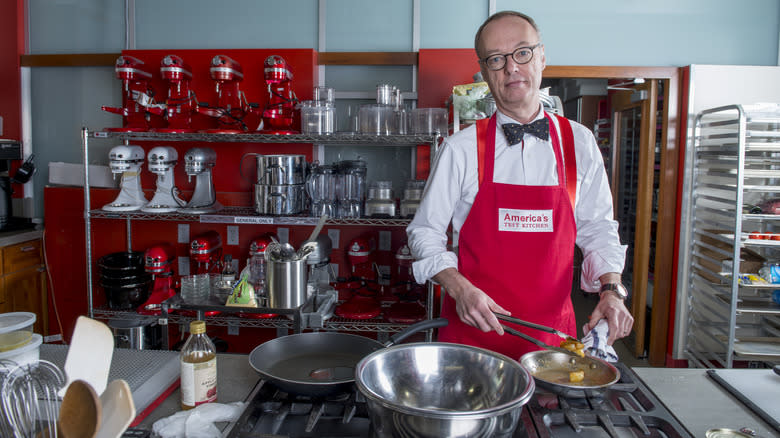

Despite Christopher Kimball being the founder of Cook’s Illustrated and America’s Test Kitchen, due to a contract dispute with Boston Common Press (the show’s parent company), Kimball departed after 16 years of recipe creation.
Boston Common Press claimed the negotiations were made in good faith. As reported by The New York Times, David Nussbaum, the chief executive of Boston Common Press, released a statement saying “We made every effort to offer Chris a reasonable contract that reflected his significant contributions to the company and are disappointed that we could not reach agreement.”
Interestingly, as reported by NPR, Kimball’s departure came two months after the company hired Nussbaum, its first-ever CEO. Nussbaum had been on the board of Boston Common Press previously. It was justified that a more experienced executive was needed to come in as America’s Test Kitchen and its surrounding properties continued to expand. However, there were rumors that this move might ruffle feathers, and bringing someone else on to oversee Kimball, who had long been at the top of the company, seemed to create friction.
According to Boston Magazine at the time, Deborah Broide, a spokeswoman for America’s Test Kitchen denied rumors that Nussbaum’s arrival as CEO would push Kimball out. “No truth at all,” she said.
A Lengthy Legal Battle Between Kimball And ATK Ensued
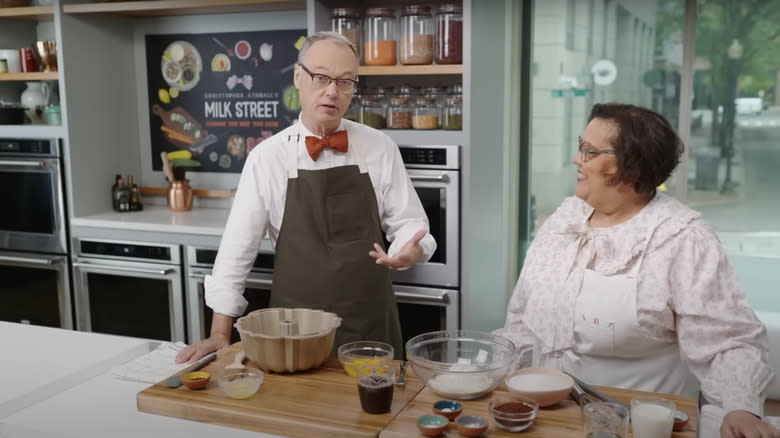

Despite the protestations of America’s Test Kitchen publicly, behind the scenes a storm was brewing. When Christopher Kimball left the America’s Test Kitchen empire, he didn’t go quietly. Kimball started a competing brand, also in Boston, called Milk Street Kitchen, with a corresponding magazine called Milk Street — and a TV show, a cooking school, cookbooks, and a podcast. That founding resulted in a lawsuit over breach of trust from Boston Press, claiming that Kimball stole confidential customer lists and trade secrets. As reported in The Washington Post, the suit said “Mr. Kimball spent the last year of his employment with America’s Test Kitchen creating a new venture which literally and conceptually ripped off America’s Test Kitchen.” In response, The New York Times reported Kimball called the lawsuit “absurd” and said that it “defamed” him.
The litigation dragged on for almost three years and was scheduled to go to trial. Kimball, along with his ex-wife and children, still owned stock in America’s Test Kitchen, and eventually he agreed to sell the shares to settle the lawsuit. As reported by Boston Magazine, a joint statement was released, allowing both companies to “co-exist in the marketplace,” and saying, “America’s Test Kitchen and Christopher Kimball’s Milk Street agree that an amicable separation is in the best interest of their respective companies.”
There’s A Take Home Refrigerator For Staff
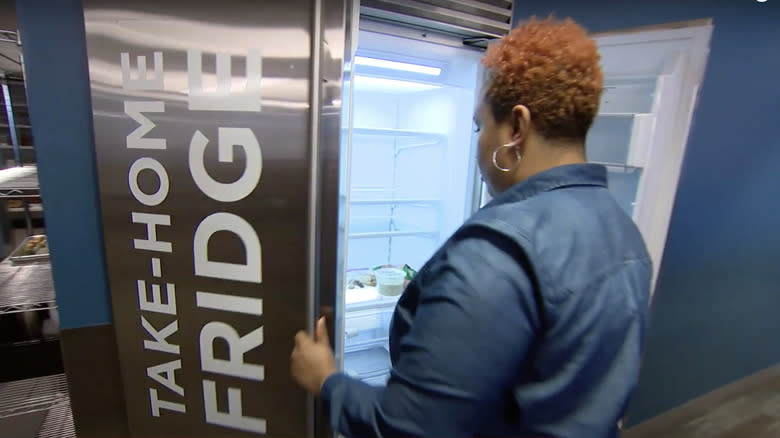

On a more positive note, if you work at America’s Test Kitchen, you may have more to look forward to than just skill-building and a paycheck — the uneaten, leftover recipes that are tested are saved for employees in the take home refrigerator. This is both part of an effort to reduce food waste and to provide a unique snack or even full meal for the almost 200 hungry workers.
However, while employees value this perk — on Glassdoor, one anonymous former employee said “The take home fridge was great,” and another said “having the take-home fridge for some fun treats is also fun” — on the same platform, you can find complaints of low wages. Afton Cyrus, a former recipe tester at America’s Test Kitchen, told WGBH, “People are regularly relying on the take home fridge for their next meal. It’s supposed to be a fun perk for people to enjoy new foods, not something that people need to depend on to make ends meet.”
However, Erin McMurrer, the Test Kitchen Director at America’s Test Kitchen puts a more positive spin on it, saying “The staff can come and visit that fridge all day long and take food home for dinner. The grocery bills of probably the entire staff have gone down since they started working at America’s Test Kitchen.”
Test Chefs Had A Five-Pound-A-Year Rule


It’s hard to resist free food — especially when samples from the take home refrigerator are part of the company culture and taste testing is literally in your job description. However, with all of those extra calories floating around, it might be hard to restrict yourself to a healthy diet.
Christopher Kimball and Bridget Lancaster (who is an executive editorial director for America’s Test Kitchen and co-host of “America’s Test Kitchen” and “Cook’s Country”) spoke at length with Fresh Air’s Terry Gross in 2011 about what happens when you’re making brownies, specifically. Responding to a question from Gross about if the cooks get sick of something they have to make and taste over and over again, Lancaster replied “Anything that’s chocolate … One of the worst things is brownie tastings, because … you don’t just have to taste them; you have to feed on them all day. One of the test cooks that works there, she and I counted up the calories that we consume in one day and it was frightening.” Then Kimball mentioned the “five pound a year rule,” further explaining “You gain five pounds a year,” which Lancaster agreed with, adding “A minimum of five pounds a year.”
However, Kimball said some cooks try to combat the extra weight: “Some people take up riding 20 miles back and forth to work on a bike or do other things, but yeah, a lot of people will gain four or five pounds a year if they’re in the process of developing recipes in the kitchen all the time.”
Special Hand Models Need Manicures


While anyone who has worked in a kitchen knows that a chef’s hands are frequently burnt, cut, scraped, and otherwise terrorized by the hazards of cooking, audiences have different expectations for on-air talent. They don’t want to see messy hands around food.
When The Wall Street Journal spoke with professional hand model Alvin Zhou, who has worked on extremely popular online cooking videos, he said “We get comments all the time about our hands.”
At America’s Test Kitchen, special hand models stand in for the up-close photography for cookbooks and video segments. As reported by CBS Sunday Morning, hand model for ATK Dan Cellucci says, “Yeah, I mean, I’ll get a phone call once in a while, ‘Do you mind just getting a manicure?'”
Two more on-air food talent interviewees from The Wall Street Journal back up this claim. Vaughn Vreeland, who used to work at Tasty and is now at The New York Times, says he got a $20 manicure before his job interview with Tasty, and Tara Maini, who is based in the UK, says “she gets fortnightly manicures and expenses them to her company.”
Less Expensive Equipment Can Be Best
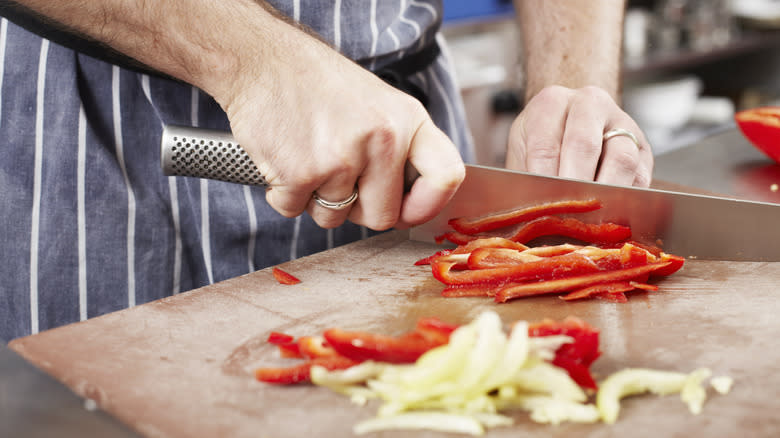

America’s Test Kitchen has always tried to give practical advice to home chefs, making the cooking process as easy as possible — and although many brands have expensive equipment that claims to ease time in the kitchen, the reality is many lower-priced items work just as well.
Julia Collin Davison, one of the current co-hosts of “America’s Test Kitchen” explained to WUWM, “Just because you want to start cooking and you want to outfit your kitchen, you don’t have to spend a lot.” She also said “the team’s favorite chef knife isn’t fancy and costs $45.”
The book “Kitchen Hacks: How Clever Cooks Get Things Done,” published by America’s Test Kitchen, includes a section on how instead of using a traditional kitchen tool like a stainless steel slicer, a home cook can use unwaxed dental floss instead. The next time you want to serve up some soft cheese at your dinner party, find your next best kitchen tool at the drugstore.
The Show Moved From A Cozy Brookline Village Home To The Boston Seaport


After Christopher Kimball departed America’s Test Kitchen, new CEO David Nussbaum decided to make some changes — including relocating the whole operation.
America’s Test Kitchen started on the second floor of a “quirky” former broom factory in Brookline Village that was 150 years old. It was “constantly blowing out circuits” from all of the lights, cameras, and appliances, according to Chief Creative Officer Jack Bishop. But a space that size couldn’t accommodate a huge expansion into more video content, ATK Kids, or group tours. If the brand was going to expand, the space would be the first piece that needed an upgrade.
The headquarters was relocated in 2017 into a former military warehouse. Suddenly America’s Test Kitchen graduated to eight stories in the Boston Seaport, where multiple studios, a library, and over 60 ovens were housed for testing and innovation. WBUR noted the new building was so large that “Cook’s Country executive food editor Bryan Roof uses a Razor scooter to zip around.”
Each Recipe Costs $11,000 To Develop
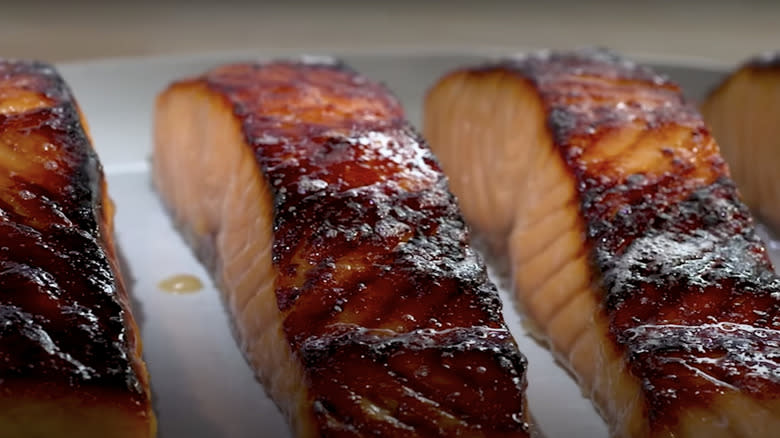

While the taste testing portion of recipe development sounds fun, it’s also quite an extensive — and expensive — process. As reported by Vox, each recipe costs approximately $11,000 to produce.
Dan Souza, a food science expert at America’s Test Kitchen, elaborated on why the recipes can be so pricey. He noted that part of the process is to try at least five recipes to start, bringing in over 55 cooks plus the editorial staff to give feedback. The kitchen can test recipes up to 100 times over two months before sending them out to volunteer home chefs.
Souza continues, “We look for 80% of people to say they’d make the recipe again. If they say no, we go back to the kitchen. We have to spend roughly $11,000 on each recipe we do.” The company makes over 1,000 recipes per year, according to Digiday, so that budget line adds up.
Volunteer Home Cooks Test Recipes


Because those recipes are so expensive to develop, an integral part of the process is volunteer home cooks — 50,000 of them, to be exact. Jack Bishop, chief content officer at America’s Test Kitchen, explains further: “This program allows 50 to 100 audience members, including families with kids, to test out a new recipe and contribute data on how easy it was, if it tastes good and, most importantly, if they would make it again” (via Digiday).
America’s Test Kitchen then waits for the magic number — 80%. If at least 80% of the home cooks don’t say they would make it again, the recipe goes back to the drawing board.
Stephanie Patterson, one of those volunteer home cooks, told CBS Sunday Morning “I feel like I’m helping them make the recipe as good as it can be before they print it.” She signed up through the America’s Test Kitchen Website and started testing for the company in 2010. She’s also active in their social media groups, noting that it can feel like a “club.”
Major Layoffs Happened In 2023
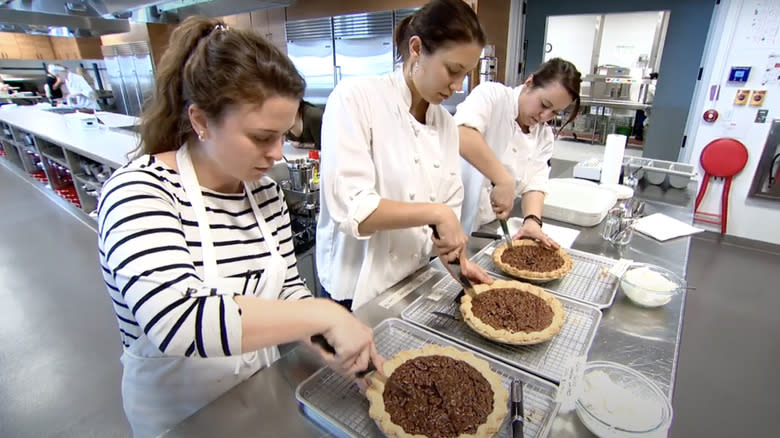

Despite how outwardly successful America’s Test Kitchen and the surrounding properties have seemed, there was a major round of layoffs from the company in 2023. According to an Instagram post on ATK United, not only did America’s Test Kitchen shut down ATK Kids, but it also let go of about 10% of its total workforce, or 23 employees. ATK Kids was focused on children’s cookbooks and kid-friendly recipes, but employees from the standard books and marketing teams were let go, too.
In a statement to Eater, a spokesperson for ATK said: “While we firmly believe that our decisions will re-position the company for greater success in this ever-changing media environment, it is a difficult time given that we let go of members of the company who contributed to ATK each in their own way.”
Don Trementozzi, president of Communications Workers of America Local 1400 in Boston, offered his own statement: “It’s disappointing that this new executive leadership, including the CEO, has made a decision to put profits over people. This is nothing more than corporate greed and not caring about the passionate workers who have built this company and their profits … we are going to do everything within our power as the union to get these employees the best exit packages possible.”
Employees Voted To Unionize
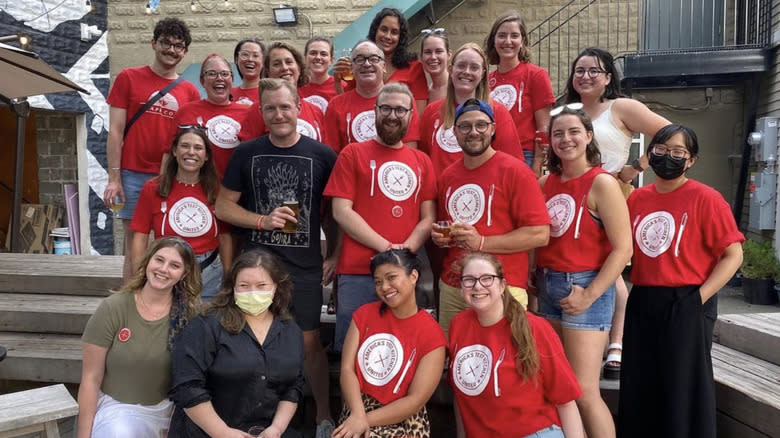

In July 2022, America’s Test Kitchen staffers voted to unionize with the Communications Workers of America Local 1400 in Boston, forming ATK United. About 100 non-management workers delivered a letter to management, which was posted on the ATK United Twitter account. The letter stated plainly, “Our salaries have always been egregiously low.” Also included in the letter were complaints about the high profits of the company not being reflected in salary increases for the employees and how workers at America’s Test Kitchen were still sacrificing personally due to “insufficient resources.” The workers made it clear they were forming a union to collectively bargain and challenge the ongoing wealth inequity at ATK.
The letter went on to additionally demand higher pay, increased subsidization of commuting costs, lower health insurance premiums, and a commitment to diversity.
While America’s Test Kitchen spokesman Brian Franklin said to WGBH that “The management of the company … would prefer to continue to work directly and collectively with employees in the future, rather than have to deal with a union on their behalf,” the majority of workers voted to unionize. Camila Chaparro, senior books editor, stated “I am unionizing for the fair pay that we deserve, and I am beyond proud to stand in solidarity with this exceptional group of coworkers and friends” (via ATK United).
Read the original article on Mashed


